-
Car Reviews
- Car News
-
Car Comparisons
Latest comparisons
- Chasing Deals
The Hyundai Kona range has been split into two, with the sporty N Line models exclusively offering AWD and a turbo engine. So, are the standard Kona grades much to write home about? We test the Elite to find out.
The Hyundai Kona is a small SUV that doesn’t get lost in the crowd. In fact, since launch, its have been fairly described as peculiar – though the unique design gives it plenty of character.
Priced from $26,600, the Kona continues to be a critical player in Hyundai’s lineup, taking on key rivals like the Mitsubishi ASX, Mazda CX-30 and Kia Seltos. The Kona was the second-best selling small SUV last year, just being pipped at the post by the ASX.
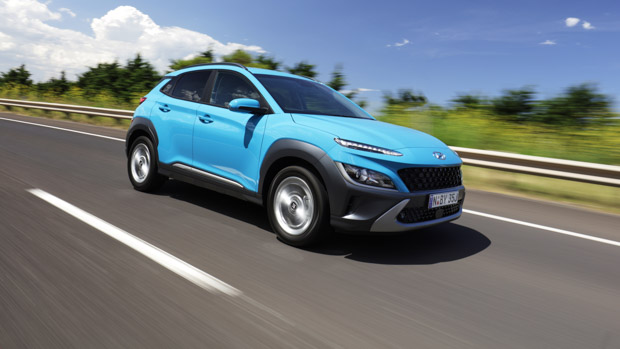
A recent facelift saw the Kona lengthened while some angles were softened. Plus, there’s been a big split to the range with sporty new N Line models introduced as the exclusive bearers of the Kona’s previously-optional 1.6-litre turbo engine, AWD, and independent rear suspension.
If you don’t want to stump up for an N Line, you’ll be getting a non-turbo 2.0-litre motor, a new CVT auto and a simpler suspension setup. So, how does the mid-spec Kona Elite compare?
The mid-tier two-litre Elite is not cheap, though you can spend much more on a Kona if you want to. Priced at $31,600 ($35,355 driveaway) it represents a relatively modest ‘SUV tax’ over its hatchback sibling, the i30 Elite ($34,446 driveaway).
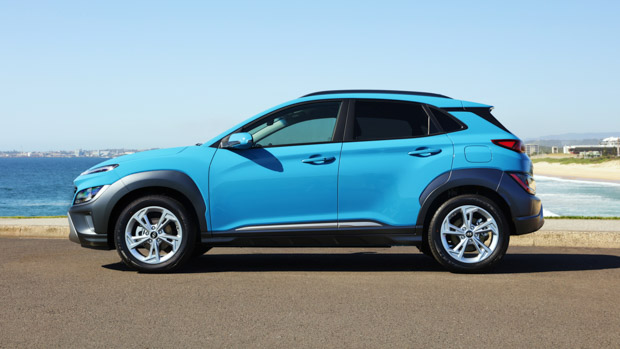
You can tell the Kona Elite from lower grades by its grey cladding (the Active is clad in black plastic). Also new are the attractive 17-inch alloy wheels with ample sidewall. The Elite misses out on the LED headlights featured on the Highlander model, however.
It used to be that a low-end Kona optioned with the turbo engine and AWD was quite a peach. But with that ‘cheat’ now taken off the table, and the least expensive turbo grade now costing $36,600 plus on-roads, the Kona range offers less choice than before.
A quick glance at the Kona Elite’s spec sheet would have you none the wiser to the changes under the bonnet, but Hyundai hasn’t left well enough alone. The 2.0-litre petrol engine still produces 110kW of power and 180Nm of torque and sends power to the front wheels.
The devil is in the details here. The 2022 Kona now runs its multi-point injection two-litre in the Atkinson cycle instead of the more conventional Otto cycle. There is a lot of technical detail and jargon to sift through, but effectively an engine running in Atkinson mode will be more efficient at low RPMs with a drop-off in absolute power.
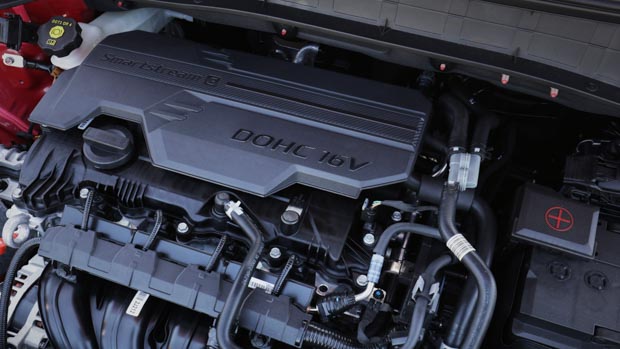
This is most commonly seen in hybrid vehicles like the Toyota C-HR where the electric motor can compensate for the outright power loss compared to an Otto cycle engine. That’s not the case in the Kona Elite, though.
Instead, Hyundai has tried to harness greater efficiency by ditching the six-speed torque converter for a CVT gearbox. Those three letters will have many motoring journalists shuddering at a glance, but the Kona’s ‘box is one of the more refined we’ve experienced.
Naturally, mashing the throttle results in the classic CVT din as the revs hang around 5,500rpms. When driven in a restrained fashion, though, the ‘box keeps the engine whisper quiet. You end up trundling about with the tacho needle floating between just 1,500-2,000rpm, which feels both efficient and refined.
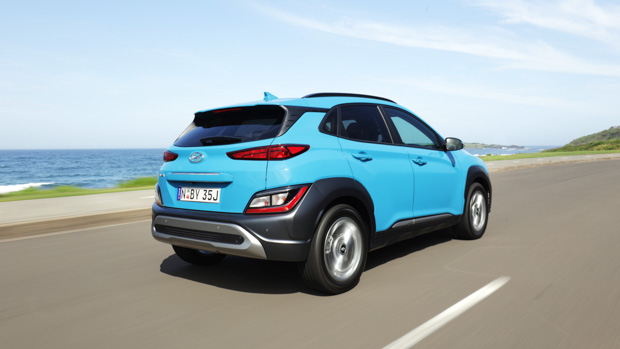
There is an array of drive settings to play with; the usual Sport, Eco and Comfort are complemented by a Smart mode which responds dynamically to the driver’s inputs and does an excellent job to boot.
Hyundai oversells the Kona Elite’s capability slightly by fitting it with terrain control modes like Mud, Sand and Snow. In practice, these don’t really help the front-drive small SUV get much further. If you’re looking for a bona fide trail capable small SUV, a Subaru XV is more suitable.
Regardless of the selected drive mode, the Kona is not fast with the 2.0-litre motor. If you are a keener driver, you should consider the N Line. The 1.6 turbo’s 130kW/265Nm provide superior mid-range punch.
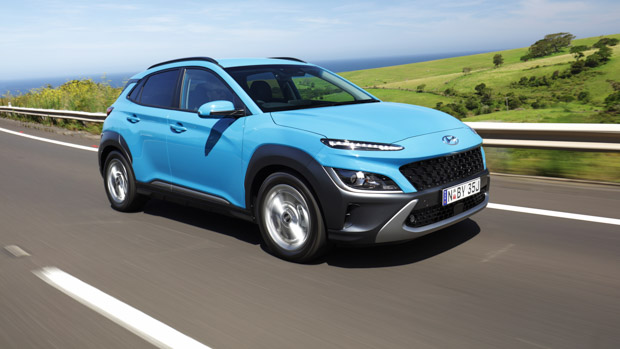
Still, most drivers will appreciate the updated Kona’s improved noise insulation, which is further amplified on the freeway by the CVT’s penchant for low rpms. The Kona is now a more soothing small SUV than before – Hyundai has done well to further separate the personas of the regular and N Line Kona models.
This has been reflected in Kona sales, too. Only around 6 per cent of Australian buyers opted for the 1.6-litre turbo powertrain fitted to the N Line variants in May 2021. The fact is that the 2.0-litre front-drive package constitutes the vast majority of Australian Kona sales.
One of Hyundai’s calling cards is their Australian ride and handling program, which nearly all of their models are subjected to. Though the settings weren’t updated for the facelift, the Kona remains a well-resolved car on Sydney’s rough roads.
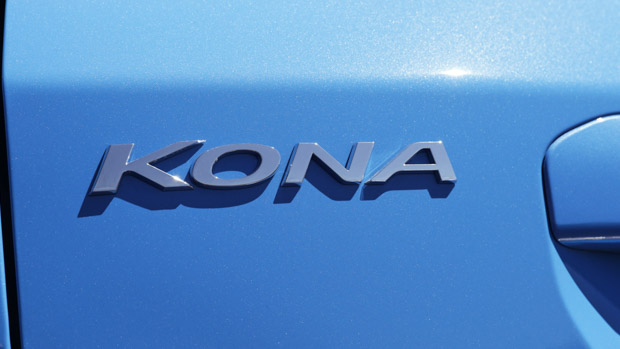
There are some handling gripes, though. The torsion beam rear suspension struggles to even out some midcorner bumps, particularly in comparison to the N Line’s more sophisticated multi-link independent rear suspension that would be so well suited to the Elite’s comfort-oriented demeanor.
Still, the Kona rarely serves up an uncomfortable experience with the dampers balancing a smooth ride with adequate rebound control. In the corners it’s a similar story as the Kona remains composed until pushed too hard where it slips predictably into understeer.
The brakes are the only real letdown. With five passengers onboard and a descent to tackle, the smell of hot brake pads wafted into the cabin. An odd spec choice of solid rotors that are smaller at the front (280mm) than the back (284mm) contributes to this.
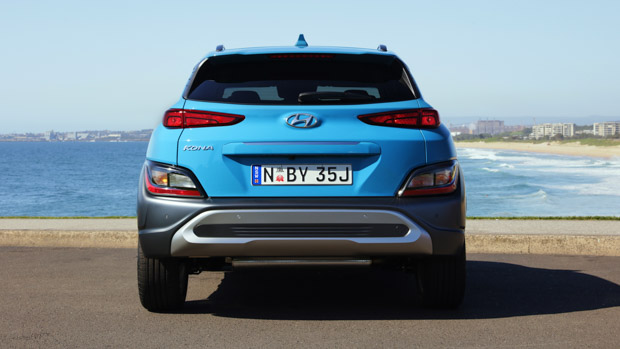
Otherwise, safety systems are fair for the Kona – forward AEB with pedestrian and cyclist detection, a reverse camera, lane-trace assist and adaptive cruise feature for a five-star ANCAP rating across the range.
The Elite tested benefits from rear cross-traffic alert, safe-exit warning and blind-spot monitoring, while the Highlander (about $41,500 driveaway) adds a 360-degree monitor and front parking sensors.
As with the exterior, the cabin changes to the Kona for 2021 are noticeable though not substantial, with the same basic design retained from last year. The cabin design is conventional and nowhere near as exciting as the out-there exterior, though it’s functional and attractive enough. The Elite gets a leather-wrapped steering wheel and shifter, too.
The seats are manually adjustable and generally quite comfortable. Hyundai says in the brochure that the upholstery is leather, but stipulates that ‘leather’ “may contain elements of genuine leather, polyurethane leather (leather substitute) or man-made materials, or a combination thereof”.
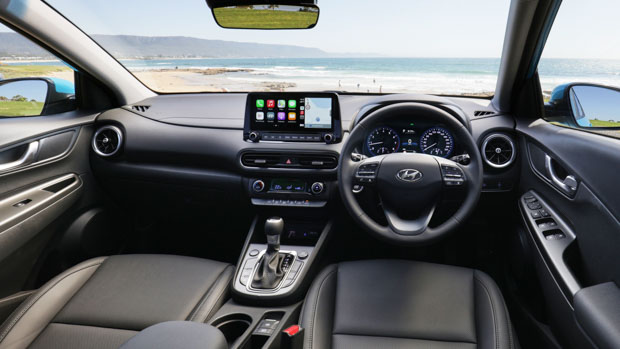
To me, the seats felt closer to vinyl than leather. They also lack heating. To enjoy toasty pews, you’ll need to make the sizable $6,400 step up to the Highlander grade that also scores seat cooling.
There are plenty of good points in here, including the big new 10.25-inch touchscreen that looks excellent and features satellite navigation. The Active ($28,200 plus on-roads) that sits below the Elite is fitted with a smaller eight-inch screen, though it gets wireless CarPlay. Grades with the bigger screen do not.
The Elite boasts a wireless charging pad and a six-speaker Harman-Kardon stereo. Unfortunately, the premium stereo branding is just that – the system lacked clarity and power in practice.
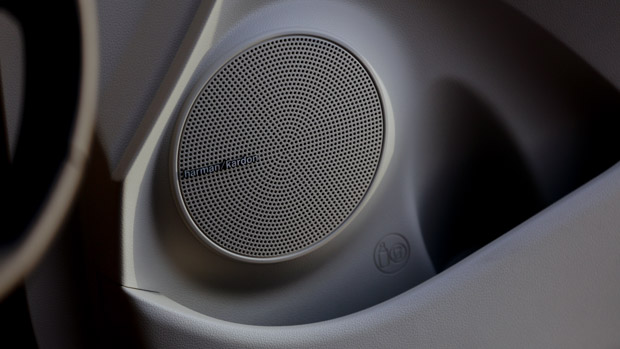
Hyundai has thought about storage space, though. Ditching the old car’s manual handbrake leaves a neat spot for keys, and the dual-level storage ahead of the shifter is a good touch. The door bins are flexible and take a large bottle. There are also two cup holders and a generous central storage bin.
While the materials do feel cheaper than those found in a Mazda CX-30 (from $29,990 plus on-roads), they give the impression that they’re hard-wearing. To that end, the Kona’s cabin feels generally well screwed together with no rattles or creaks evident.
The room on offer in the back seat is reasonable for the class. At six-foot-two, I found knee room a squeeze behind myself, but for those six-foot and under it will be agreeable. Head and toe room is pretty impressive for the class.
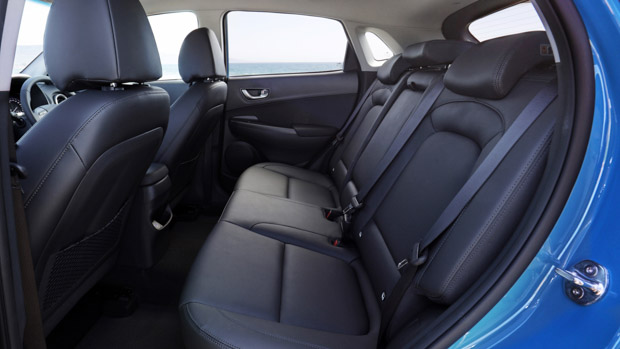
Unfortunately, other features are sparse – the Kona does with only one USB port and no adjustable rear air vents. There is a flip-down armrest and the bench itself has good support for two passengers.
Despite being one of the shortest in-class (4,205mm), the good rear-seat space doesn’t adversely impact boot space. Hyundai rates the capacity at 374L in size, which is 21L short of the i30 hatch.
For 2021 Hyundai includes a cargo net with the Kona as standard – which is a classy touch. There’s also a space-saver spare beneath the boot floor, and the rear seats fold in a 40:60 ratio to accommodate larger objects.
One of the Kona’s big drawcards is the affordable servicing packages offered by Hyundai. For five years or 75,000kms of servicing, the Kona Elite costs a very reasonable sum of $1,595. Servicing does need to be carried out fairly frequently, every 12 months or 15,000kms.
That’s less frequently than the more complicated N Line, which needs maintenance every 10,000km. However, the overall cost is the same $1,595 as the 2.0-litre car.
Hyundai covers the Kona with a five-year, unlimited-kilometre warranty and includes five years of free roadside assistance.
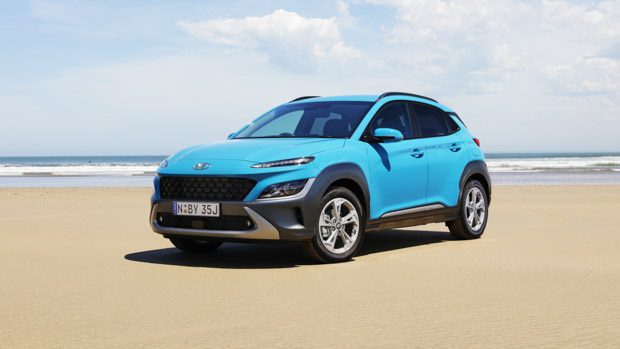
The fuel economy has improved notably for the new Kona, with claimed consumption dropping to 6.2L/100km (from 7.2L/100km). Attribute that to the Atkinson cycle engine and the CVT gearbox.
Over our week of testing, the Kona returned a combined figure of 7.6L/100km. That’s some way off the claimed figure, but better than the 8.3L/100km we scored in the pre-facelift Kona. The lowest consumption we returned on a 50km mixed run was 6.4L/100km.
Interestingly, this Hyundai SUV is available with an electric powertrain in the circa-$25,000 dearer Kona Electric – one of our recommended vehicles for those seeking an entry-level battery electric vehicle.
In Elite trim, the facelifted Hyundai Kona is a solid if not outstanding option. The build quality and affordable servicing will make for stress-free ownership, and its funky looks are sure to attract attention.
The Atkinson cycle tech applied to the facelifted Kona is interesting, too. Combined with a CVT, it makes Hyundai’s small SUV more frugal than before. However, the lack of flexibility means it still feels a few years behind a Toyota hybrid or turbocharged European competitor.
We still think that the 1.6-litre turbo is a better engine and that Hyundai’s choice to restrict it to the sporty N Line variants is an odd one.
However, the Kona’s more relaxed powertrain suits the car better than before – bonus points for slick CVT tuning. As a package, the Elite package is sweetened with the inclusion of solid technology, a comfortable ride and reasonable purchase price.
Variant tested ELITE (FWD)
Key specs (as tested)
About Chasing cars
Chasing Cars reviews are 100% independent.
Because we are powered by Budget Direct Insurance, we don’t receive advertising or sales revenue from car manufacturers.
We’re truly independent – giving you Australia’s best car reviews.
The estimate provided does not take into account your personal circumstances but is intended to give a general indication of the cost of insurance, in order to obtain a complete quote, please visit www.budgetdirect.com.au. Estimate includes 15%^ online discount.
^Conditions Apply
Budget Direct Insurance arranged by Auto & General Services Pty Ltd ACN 003 617 909(AGS) AFSL 241 411, for and on behalf of the insurer, Auto & General Insurance Company Limited(ABN 42 111 586 353, AFSL 285 571).Because we don’t know your financial needs, we can’t advise you if this insurance will suit you. You should consider your needs and the Product Disclosure Statement before making a decision to buy insurance. Terms and conditions apply.
Indicative quote based on assumptions including postcode , 40 year old male with no offences, licence suspensions or claims in the last 5 years, a NCD Rating 1 and no younger drivers listed. White car, driven up to 10,000kms a year, unfinanced, with no modifications, factory options and/or non-standard accessories, private use only and garaged at night.
^Online Discounts Terms & Conditions
1. Discounts apply to the premium paid for a new Budget Direct Gold Comprehensive Car Insurance, Third Party Property Only or Third Party Property, Fire & Theft Insurance policy initiated online on or after 29 March 2017. Discounts do not apply to optional Roadside Assistance.
2. Discounts do not apply to any renewal offer of insurance.
3. Discounts only apply to the insurance portion of the premium. Discounts are applied before government charges, taxes, levies and fees, including instalment processing fees (as applicable). The full extent of discounts may therefore be impacted.
4. We reserve the right to change the offer without notice.